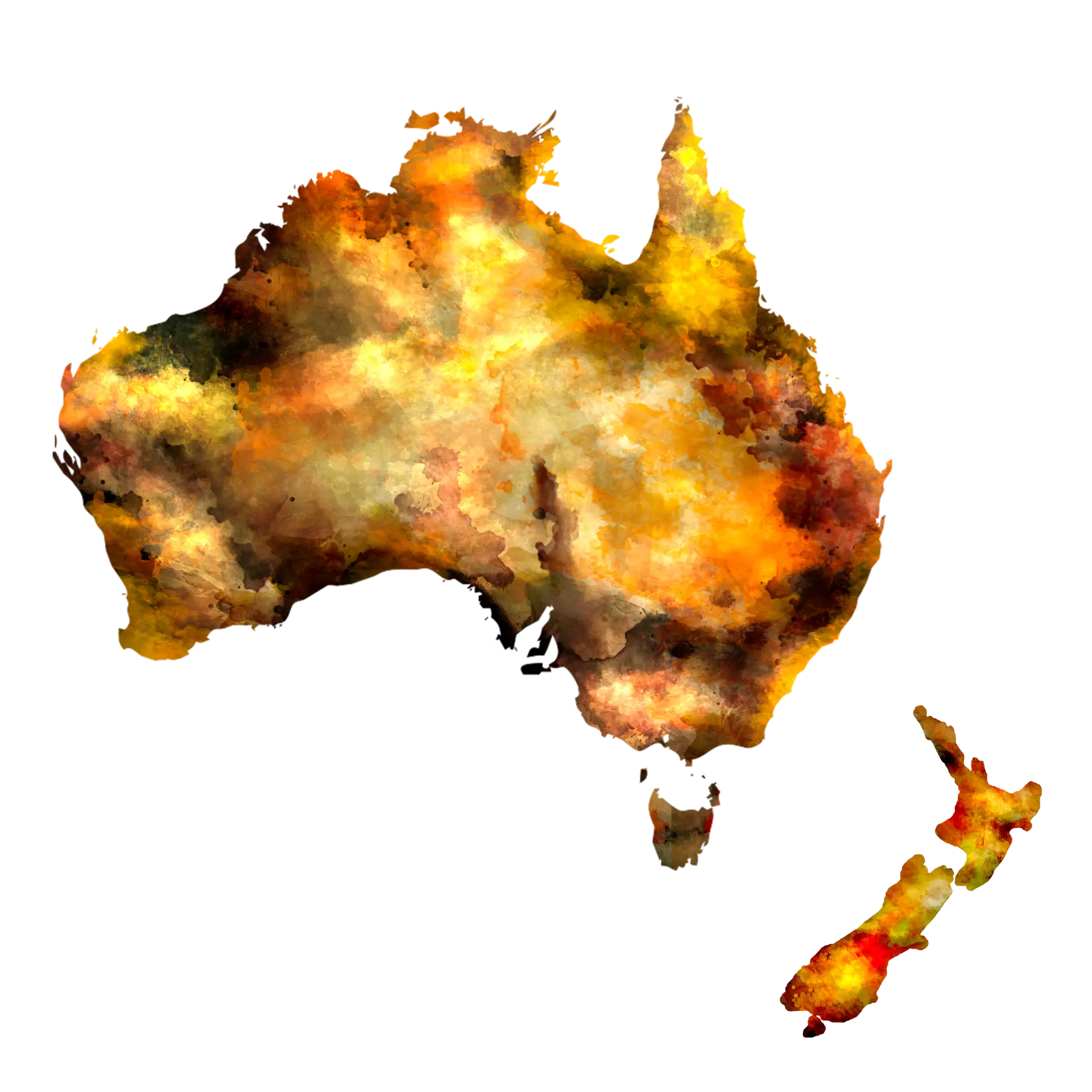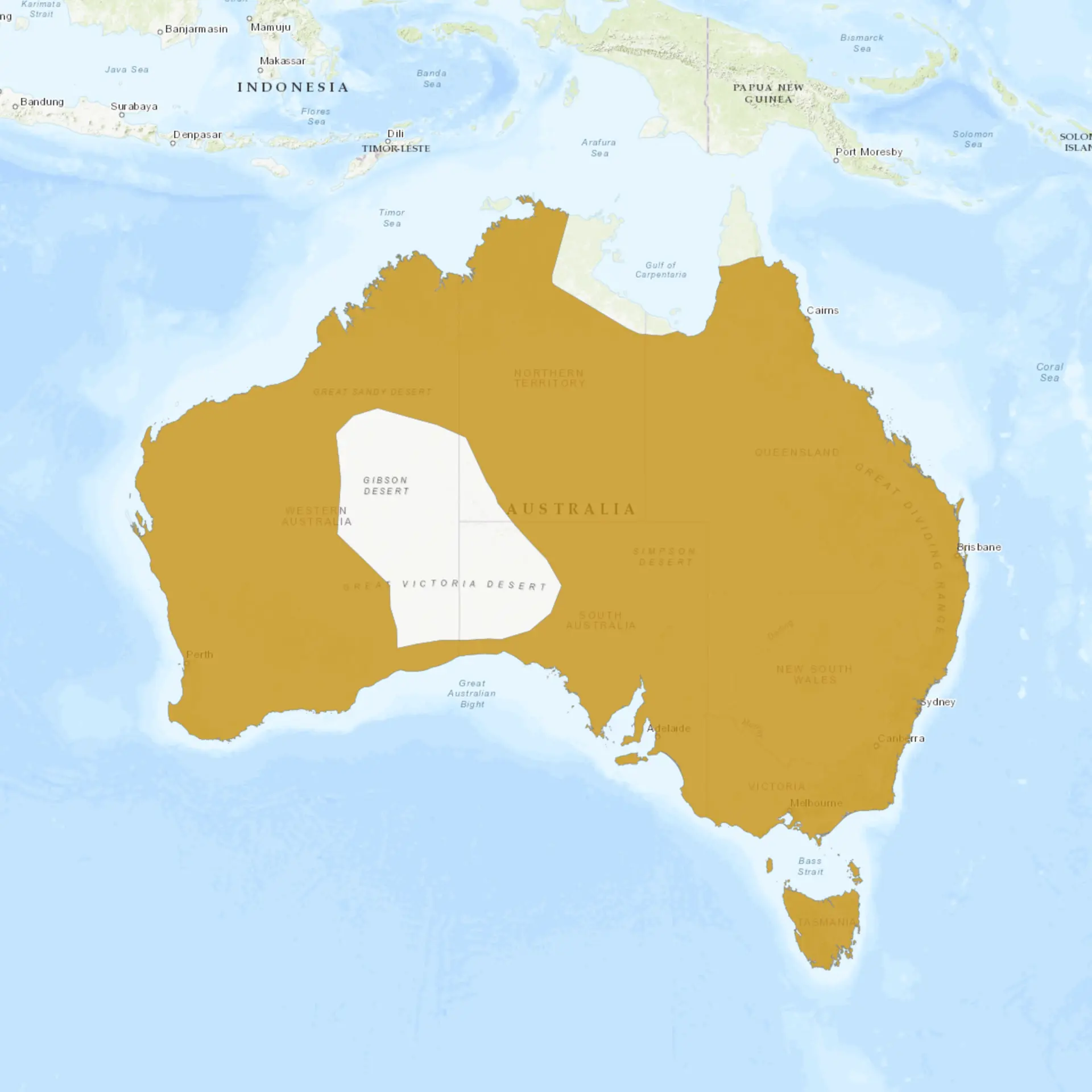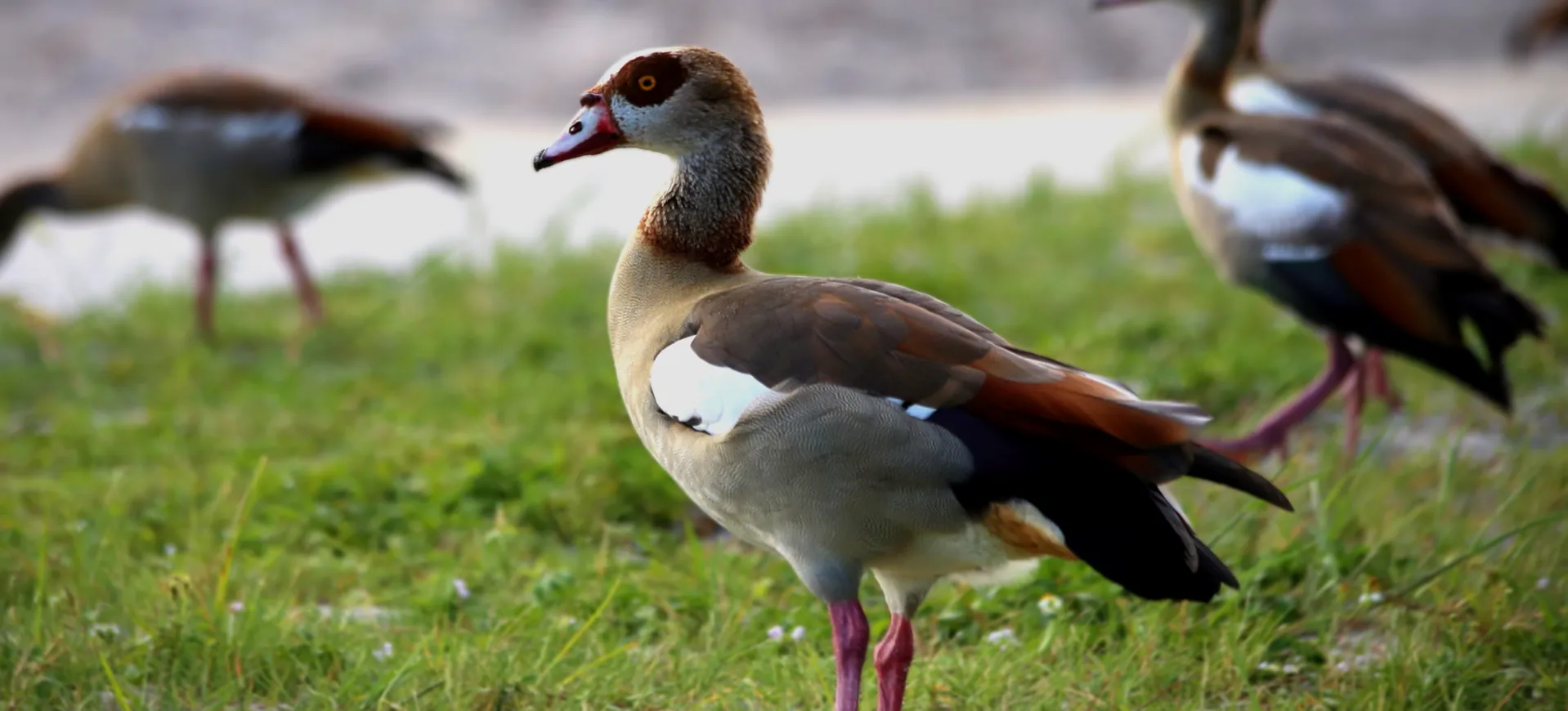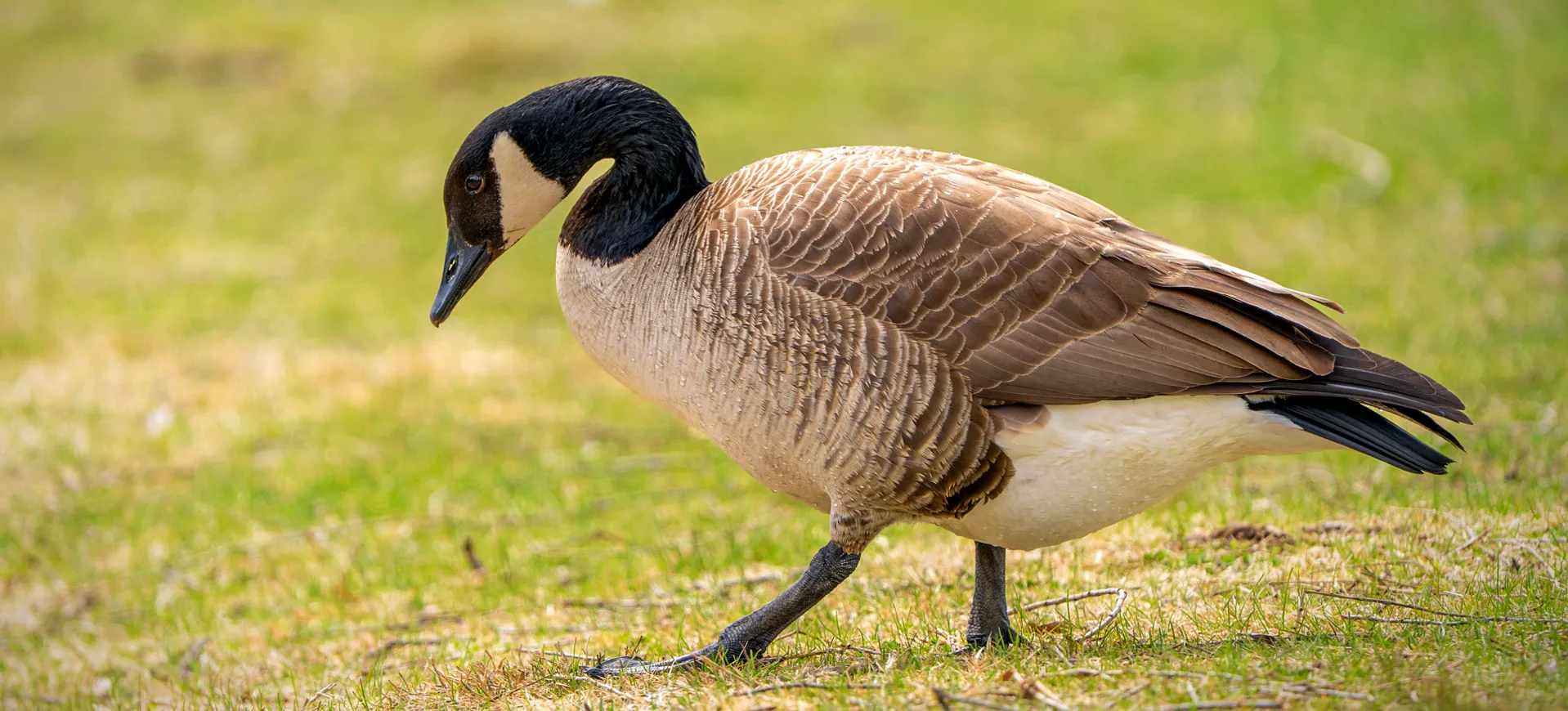Overview
The Black Swan, Cygnus atratus, is a large waterbird native to Australia, recognizable for its striking black plumage and bright red bill. This species is unique among swans, characterized by its mostly black feathers, contrasting with the white flight feathers visible in flight. Black Swans are highly social birds, often found in large flocks in wetlands, lakes, and rivers across much of Australia and parts of New Zealand, where they have been introduced. They play a significant role in their ecosystems, grazing on aquatic and near-aquatic vegetation, which helps maintain the health of wetland habitats.
Black Swans exhibit strong pair bonds, with couples often remaining together for many years and sometimes for life. These bonds are reinforced through elaborate courtship displays and mutual preening. They are known for adapting to altered environments, including urban parks and man-made reservoirs, where they can become local attractions. The species has also been introduced to countries outside its native range, inhabiting similar aquatic environments.
Depending on environmental conditions, breeding can occur at any time of year, with pairs building large nests near the water’s edge. The social structure of Black Swan populations is complex, with individuals forming temporary hierarchies based on age, size, and breeding status. Despite facing threats from habitat loss and pollution, Black Swans are currently not considered at risk due to their adaptability and the protection of their habitats in many areas.
Taxonomy
Kingdom
Phylum
Class
Order
Family
Genus
Species
Type
Current distribution:
Black Swans are widely distributed across Australia, with stable populations in most states except for the arid regions. They are also found in New Zealand, where they were introduced in the 1860s. In addition, small populations exist in various European countries, North America, and Japan, where they have been introduced, often as ornamental birds in parks and estates.
The adaptability of Black Swans to different environmental conditions has facilitated their survival and expansion outside their native range. Conservation efforts in their native and introduced ranges focus on habitat preservation and monitoring to ensure that populations remain healthy and do not negatively impact local ecosystems.
Physical Description:
The Black Swan is notable for its predominantly black plumage and the bright red bill, which features a white band near the tip. Adults can be distinguished by their long necks and large size, often held in an S-shape. The contrast between their black body and white flight feathers becomes particularly evident during flight, creating a striking visual display. Juveniles are more muted in color, displaying greyish-brown plumage until they mature.
Black Swans measure about 110 to 142 cm in length and have a wingspan of 1.6 to 2 meters, making them one of the larger waterfowl species. Their bodies are adapted for a life spent mostly in the water, with webbed feet for swimming and a streamlined body for ease of movement in water and air. The sexual dimorphism in this species is minimal, with males being slightly larger and having a longer and straighter bill than females.

Lifespan: Wild: ~20 Years || Captivity: ~40 Years

Weight: Male: 9.9-20 lbs (4.5-9 kg) || Female: 8.8-18 lbs (4-8.2 kg)

Length: Male & Female: 43-56 in (110-142 cm)

Wingspan: Male & Female: 63-79 in (160-200 cm)

Top Speed: 50 mph (80 km/h)
Characteristic:
Native Habitat:
Black Swans are indigenous to Australia, where they inhabit freshwater lakes, swamps, rivers, and brackish waters in coastal areas. Their adaptability matches their preference for wetlands and open waters, allowing them to thrive in natural and artificial water bodies, including ornamental lakes in urban parks. Preserving these habitats is crucial for maintaining healthy Black Swan populations and the wetland ecosystems’ biodiversity.
Their ability to adapt to various environments has enabled the Black Swan to expand its range to New Zealand and other parts of the world where it has been introduced. Black Swans fulfill similar ecological roles in these new habitats, grazing on aquatic vegetation and contributing to the local biodiversity.
Biomes:
Biogeographical Realms:
Continents:
Countries:
Diet:
Diet & Feeding Habits:
Black Swans are herbivores, primarily feeding on aquatic and near-aquatic vegetation, including algae, reeds, and grasses. They graze in shallow waters or on land near water bodies, using their long necks to reach submerged plants. This diet is supplemented by small amounts of aquatic insects and crustaceans, which they might ingest while feeding on vegetation.
Feeding typically occurs in groups, with individuals often benefiting from the disturbance caused by others, which can bring hidden food to the surface. The feeding habits of Black Swans contribute to the ecological health of wetlands by controlling the growth of aquatic plants and ensuring the vitality of these habitats. Their adaptability to different food sources is a key factor in their survival in natural and urban environments.
Mating Behavior:
Mating Description:
Black Swans are known for their strong, often lifelong pair bonds, exhibiting monogamous behavior with partners sharing nest-building and incubation duties. Their courtship involves mutual preening, synchronized swimming, and calling, strengthening the pair’s bond. Nesting sites are typically located in shallow water or on islands, with nests made from reeds, grasses, and other plant material.
Breeding can occur any time of year, influenced by environmental conditions and food availability. The female lays 4 to 8 eggs, which both parents incubate for about 35 to 40 days. A notable aspect of Black Swan’s reproductive behavior is the high degree of parental investment in the offspring, including extended care after hatching. The success of their breeding efforts is closely linked to the availability of suitable nesting sites and sufficient food resources.
Reproduction Season:
Birth Type:
Pregnancy Duration:
Female Name:
Male Name:
Baby Name:
Social Structure Description:
Black Swans are highly social birds, forming large flocks outside the breeding season. These flocks provide safety in numbers and facilitate the sharing of information about food and nesting sites. Within these social groups is a hierarchy based on age, size, and breeding status, influencing access to resources and mates.
During the breeding season, pairs become more territorial, defending their nest sites against intruders. The strong pair bonds and cooperative parenting are key aspects of their social structure, enhancing the survival of offspring. The adaptability of Black Swans to form social bonds and navigate complex social hierarchies is a testament to their intelligence and social complexity.
Groups:
Conservation Status:
Population Trend:
The Black Swan is classified as Least Concern by the IUCN, with a stable population trend across its native and introduced ranges. This status is attributed to their wide distribution, adaptability to various environments, and the general success of conservation measures to protect wetland habitats. Despite this, local populations can be affected by habitat degradation, pollution, and changes in water management practices.
Conservation efforts continue to focus on preserving wetlands and regulating water quality to support healthy populations of Black Swans and other water-dependent species. Monitoring populations, especially in areas where Black Swans have been introduced, ensures that they do not adversely impact local ecosystems or compete with native species.
Population Threats:
The main threats to Black Swans include habitat loss due to drainage of wetlands, urbanization, and agricultural development. Pollution, especially in urban water bodies, can also affect their health and reproductive success. Climate change poses a long-term threat by altering wetlands’ rainfall patterns and water availability, potentially impacting food sources and nesting sites.
Conservation measures are in place to mitigate these threats, including habitat restoration, pollution control, and sustainable water management practices. Public awareness and involvement are essential for the conservation of Black Swans and the ecosystems they inhabit.
Conservation Efforts:
Conservation initiatives for Black Swans involve habitat protection and restoration, pollution reduction, and the sustainable management of water resources. These efforts are supported by legislation and community involvement, aiming to ensure the preservation of wetland habitats and the biodiversity they support. Research and monitoring programs contribute to a better understanding of Black Swan ecology, informing conservation strategies and addressing potential threats.
Educational programs and public engagement activities raise awareness of the importance of wetlands and the need for their protection. International cooperation is also crucial for managing populations where Black Swans have been introduced, ensuring they integrate harmoniously with local ecosystems and do not outcompete native species.
Additional Resources:
Fun Facts
- Black Swans can perform a “triumph dance,” a ritual involving synchronized swimming and calling between mates.
- Unlike many bird species, Black Swans have occasionally engaged in same-sex pairings, with male pairs sometimes stealing nests or forming temporary threesomes with females to obtain eggs, then raising the cygnets together.
- The Black Swan is the state bird of Western Australia and features prominently in the state’s flag and coat of arms.
- They can fly long distances, even though they are often seen gliding majestically on water bodies.
- Black Swans have inspired numerous cultural references and are often associated with the idea of something being rare or unexpected, as popularized by the phrase “black swan event.”
- Their feathers contain a special oil that helps keep them waterproof and buoyant.
- Cygnets are born with fluffy grey down and do not attain their adult black plumage until about a year old.
- Black Swans are among the few birds that can eat while swimming, often dipping their heads underwater to reach aquatic plants.
- The species is highly vocal, with many sounds, including bugle-like calls, whistles, and hissing, especially when defending territory.
- Conservation of the Black Swan contributes to the protection of wetlands, crucial habitats for various species and important for water purification and flood control.




















































































